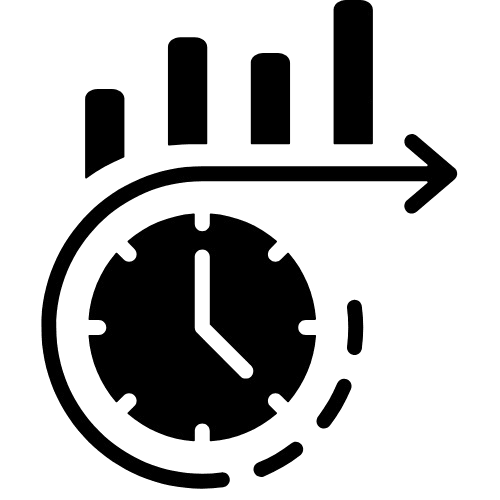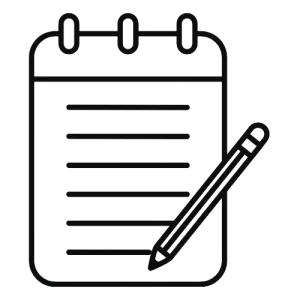
What is futures trading ?
Futures trading involves buying or selling futures contracts of assets like(stocks, indices, commodities, or currencies ) at a predetermined price on a specific future date. These are standardized contracts, and unlike options, the futures contract obligates the buyer and seller to fulfill the contract.
Futures contracts are derivative contracts traded in the stock market’s futures and options(F&O) segment. Unlike equity or shares, which represent a stake of ownership in a company, futures contracts do not have any inherent value. They derive their value from the underlying assets. The underlying assets could be stocks, commodities, indices, or currency pairs.
Futures contracts are leveraged instruments. In other words, you can buy or sell the futures contract for a fraction of the cost of the underlying asset.
Opportunities for a trader in Futures trading
Futures trading offers opportunities for both hedging and taking speculative positions in the underlying asset

In most cases, traders in futures markets trade to take advantage of price fluctuations in the underlying asset. In other words, as a futures trader, you speculate with the ultimate objective of profiting from price fluctuations.

When taking up positions (buy or sell) in the futures market, you pay a small upfront payment known as margin money to the exchange. By doing so, you lock in the price at which you buy or sell a contract and are now obligated to settle the contract on or before an expiration date.

nlike in stocks, where you can only do so when you own them, in the futures and options market, you can sell a contract without owning the underlying security, which is called shorting.

The buy position in the F&O segment is often called the long position,' and the sell position taken by the trader is called the 'short position.'
Open Your Demat Account Now !
Key terminologies in futures trading that you should know
Before you start trading in the futures market, you must be aware of the terms traders use in futures trading
Futures Contract
This is an agreement between the buyer and seller of a futures contract to buy or sell an underlying asset on or before a future date, called the settlement date or expiry date of a futures contract.
Spot Price
The current market price of the underlying asset is called the spot price.
Futures Price
The price at which a buyer and seller of the contract agree to exchange the underlying asset on a future date is called futures price.
Expiry Date
The date on which the futures contract is settled is called the expiry date.
Margin
The minimum amount required to open and keep your futures position, whether long or short, is called margin money or margin.
Mark-to-Market
The profit or loss is cash settled daily in futures trading. In other words, the profit or loss is adjusted from your cash balance, which is called market mark-to-market or M2M.
Difference between Futures trading & Options
Futures and Options contracts come under the derivatives segment of the stock market. The underlying could be stocks, indices, commodities, or currency pairs.Some key differences between futures trading and options are:-
Futures contract
Options Contract
Obligation
Both the buyer and seller involved in futures trading are obliged to settle the contract on the expiry date
Right, No Obligation
The buyer of the options contract has the right to buy the option contract. At no point is he under an obligation to buy or sell the underlying asset
Margin
Both the buyer and seller are required to enter into the contract by paying the margin money
Margin
The option contract buyer does not have to pay any margin.Only the seller pays margin to the exchange before selling an options contract
Unlimited Loss
In futures trading, the buyer and the seller are exposed to the risk of unlimited loss if the underlying asset's price goes against their view
Unlimited Loss
Unlike the option seller, the buyer has no risk of unlimited loss
Profit Potential
Both buyer and seller have the potential to make unlimited profit in case their view turns out to be right
Profit Potential
Option buyers have the potential to make unlimited profits, unlike option sellers, whose profit is limited to the premium received
No Time Decay
Unlike in options, in futures trading, there is no concept of time decay in futures contracts.
Time Decay
Time decay plays a significant and a favorable role for options sellers
Hedging and Speculation
Used both in hedging and Speculation
Hedging and Speculation
Option contracts are used by traders in both hedging and speculation
What is a Futures Trading account ?
A futures trading account is no different from your equity or your options account. You can contact your stockbroker and ask them to activate the derivatives segment in your trading account. There are some KYC verification documents that you need to submit to your stockbroker. Once the documents are verified, the segment gets activated in your trading account.
Key Features Of Futures Trading Are
Fixed Contract Size
Futures contracts are standardized, meaning the quantity, delivery date, and specification of the underlying asset are predetermined and fixed
Leverage
Futures contracts, by virtue, are highly leveraged instruments. By entering a futures contract, a trader controls a prominent position by paying a small upfront margin. The potential for profits is as significant as losses if the trade goes against you
Mark-To-Market Settlement
The Profit or loss in a futures contract is credited or debited in a trader's cash ledger daily
Returns Higher Than Stocks
The ROI is higher in futures trading than stocks, as only a margin amount is paid to open a position
Hedging
Investors sometimes use futures positions to hedge their portfolios against any sudden price move against them
Speculators
Use futures contracts to make quick profits in a short time. It is also essential to understand that this comes with its own set of risks
How do you activate your futures trading segment ?
Opening your Demat account is now a digital process. To activate the derivatives segment,you first need to have an active demat cum trading account .We offer our customers a seamless,100% online account opening process, which takes just 15 minutes*. Let us understand the step-by-step process :-
 Step 1
Step 1
Fill in your basic details.
 Step 2
Step 2
Upload mandatory KYC documents.
(like PAN, Aadhar card, and canceled cheque).
 Step 3
Step 3
Post verification, your demat cum trading account is activated.
 Step 4
Step 4
To activate Futures trading, Proof of Income is to be submitted, which can be done 100% online via our app or website.
Open your FREE* Demat account with us in 15 minutes and join the other 29lakh+ investors and traders
Open Your Free Demat Account Now !
FAQs
What is futures trading, and how is it different from Stock trading?
Futures trading involves buying or selling futures contracts of assets like(stocks, indices, commodities, or currencies ) at a predetermined price on a specific future date. A futures contract obligates the buyer and seller to fulfill the contract on expiry. Unlike buying stock directly, where you as a shareholder get to be a part owner of a company, a futures contract is an obligation for both the buyer and seller to close the futures contract on the expiry date. In other words, a trader locks in the price the moment he buys or sells a futures contract for a transaction that will happen later.
What does margin mean in futures trading? Why must I pay it when I buy or sell a futures contract?
Margin or margin money is an upfront payment you must make to the exchange when you open a futures position (buy or sell contract) in the stock market. By making this upfront payment, you only pay a small amount instead of the contract’s full value, which is usually much higher. Think of it as a deposit made in good faith, which you make to assure that you will meet your obligation when the time comes. By doing so, you lock in the price today for the transaction that will happen in the future.
What does 'going long' and 'going short' mean in futures trading?
Going long means buying a futures contract in anticipation that the underlying asset’s price will increase after you buy it but before the expiry date of the futures contract. In other words, your view is positive or bullish in that particular asset, and you expect to sell the futures contract at a higher price than what you had bought, making a profit on your trade.
Going short means selling a futures contract in anticipation that the underlying asset’s price will decrease after you sell it but before the expiry date of the futures contract. In other words, your view is negative or bearish in that asset, and you expect to profit from the price decline. Essentially, you are selling today to buy back the asset at a lower price on a future date.
What does "mark to market" mean, and how does it affect my trading account on a day-to-day basis?
Mark to market, or M2M, as popularly known in the trading community, is a process wherein the profit or the loss on your open position in a futures contract is calculated and directly credited or debited to your cash balance in your trading account on a day-to-day basis. This means that your account balance fluctuates daily based on the price movement of your futures contract.
How is futures trading different from options trading? Which one of the two is more suitable for a beginner?
The key differences are :
- Obligation: A futures contract obligates both the buyer and seller to fulfill the contract. In contrast, an options contract gives the buyer the right, not an obligation.
- Margin: In a futures contract, the buyer and the seller must pay the upfront margin to the exchange. In the case of an options contract, only the seller pays the upfront margin.
- Potential for Loss: In futures trading, both the buyer and the seller can incur unlimited losses if their view is wrong, whereas an option buyer’s loss is limited to the premium he pays.
- Time decay: Options contracts are subject to time decay (theta), whereas future contracts are not.
As a beginner, it is advisable that you first spend time learning in detail about these trading instruments. Futures and options contracts are complex instruments, and a sound understanding of various aspects is essential before you begin trading.
